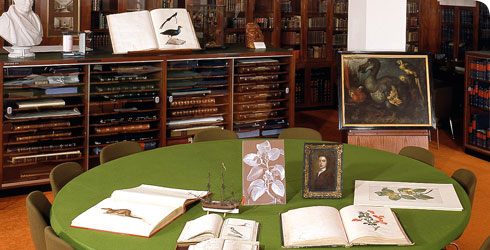Why are the collections important?
The Museum's collections serve many purposes. The range of specimens on display form an educational and inspiring role for visitors. Those held behind the scenes form the basis of research projects carried out by the Museum's 300 scientists and numerous visiting scientists and researchers from all over the world. These projects include solving problems in agricultural, medical and forensic science.
The library holds images of specimens that are long since extinct, as well as records of specimens where the originals have been lost. Many type specimens have unfortunately been lost, such as Alfred Wallace's Brazilian collection, which was destroyed in a ship fire in 1852. But illustrations and paintings of the originals still survive, leaving us with the only record available from these eighteenth and nineteenth century adventures.
The more we know about the natural world and its biodiversity the more we can do to protect it. By looking back over biological records, we can determine whether a particular species has decreased in number and look at the factors that may be causing this.
